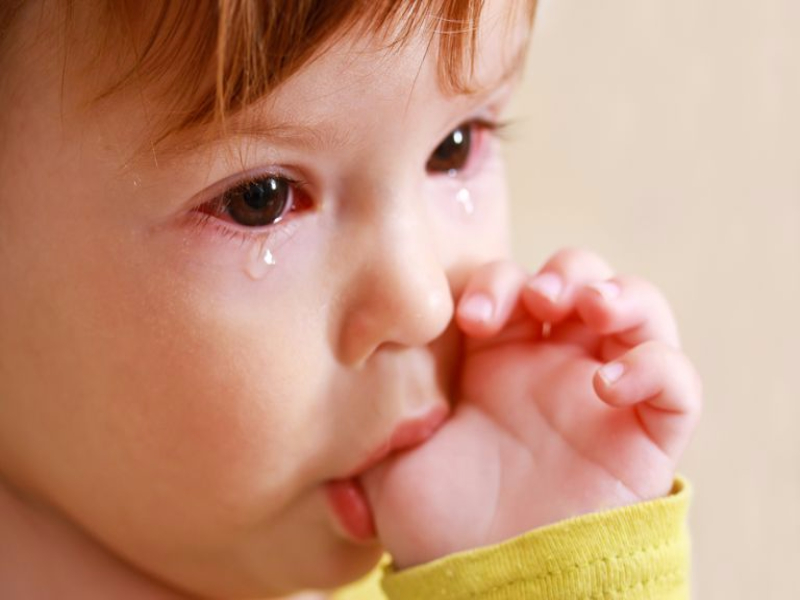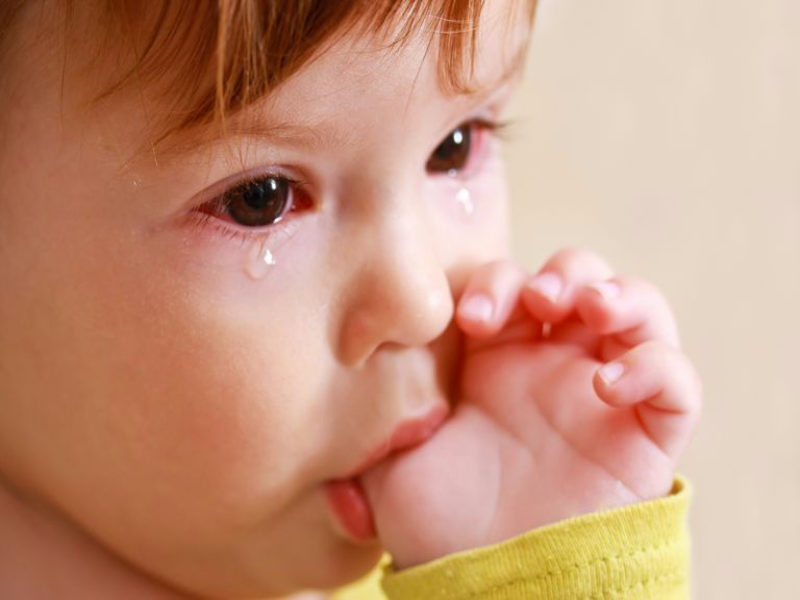Via verywell: Pink Eye and You Child
When most parents think of pink eye (conjunctivitis), they are thinking of a bacterial infection of the eye. There are a lot of things that can cause pink eye though, including viral infections, allergies, and irritation.
Symptoms of Pinkeye
When caused by a bacteria, children with pink eye will have green or yellow discharge from their eyes and the white parts of their eye and the inside of the lower eyelid will be red.
In addition to being matted when they wake up, with bacterial conjunctivitis, you will have to frequently wipe away the drainage from your child’s eyes.
Children can also have pink eye from allergies (allergic conjunctivitis) which will cause their eyes to be red, itchy, and have tearing.
Viral infections can also cause pink eye. When a virus causes pink eye, the eyes will be intensely red and they will have tearing and a white discharge.
A scratched eye or corneal abrasion can also cause tearing, redness and pain in a child’s eye. While most infections affect both eyes, an abrasion would be expected to just cause symptoms in one eye.
Diagnosing Pink Eye
Although cultures can be done, the cause of pink eye is usually diagnosed by a physical examination and the pattern of symptoms.
Did your child just get sunscreen or shampoo in his eye? Then he likely has irritant pink eye.
Does she have a clear runny nose during the peak of her usual allergy season and both of her eyes are red and itchy without any discharge?
Then it is likely allergic conjunctivitis.
Was he exposed to pink eye at daycare and now has a red eye with lots of green discharge? Then he likely has classic bacterial pink eye.
Treatments for Pink Eye
Bacterial causes of pink eye require an antibiotic, either topical drops or ointments or an oral antibiotic if your child has another bacterial infection (like an ear infection).

Allergic conjunctivitis can be treated with typical allergy medications, and topical drops, like Pataday and Alocril.
Viral causes of pink eye do not usually require treatment. They can linger for several weeks though, moving from one eye to the other, although symptoms are typically milder in the second eye. Unlike bacterial pink eye, with a virus, symptoms can include pain and photophobia. Preauricular adenopathy (swollen lymph gland in front of the ear) on the same side as the red eye is a classic sign of viral pink eye.
Whatever the cause, you should usually wipe away any eye discharge with a cool moist cloth and wash your hands frequently in case it is contagious. Over the counter drops can also often help with the redness and irritation in older children.
What to Know About Kids with Pink Eye
Other things to know about kids with pink eye include that:
- pink eye is probably overdiagnosed. With an upper respiratory tract infection, many children have reflux or backup of their nasal drainage through their tear ducts and into their eye. These kids will usually have a runny nose and cough and a little drainage from their eyes, especially when they wake up. They will not have continuous eye drainage throughout the day and their eyes will not be red. This pattern of eye drainage is usually not pink eye and doesn’t require treatment.
- a blocked tear duct is sometimes confused with pink eye in younger infants. While both might cause eye discharge, the eye shouldn’t be red with a blocked tear duct.
- for bacterial infections, eye ointments are typically used for younger infants, while older children usually do better with eye drops.
- pharyngoconjunctival fever is a classic childhood illness caused by adenovirus leading to pharyngitis, fever, and pink eye
- encourage your kids to stop wearing their contact lenses when they have pink eye
- unless caused by an allergy or irritation, most causes of pink eye are contagious
- even though pink eye might be contagious, it is not usually a good reason to keep a child out of daycare or school, unless he also has a fever or behavioral changes.
If your child with pink eye doesn’t respond to typical treatments, or if he also complains of pain or vision problems, an evaluation by a Pediatric Ophthalmologist might be a good idea.






